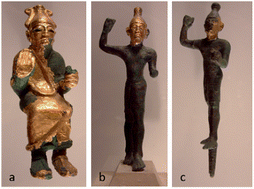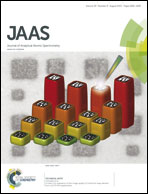In situ scanning micro-XRF analyses of gilded bronze figurines at the National Museum of Damascus
Abstract
Scanning micro-XRF analyses were applied in situ at the National Museum of Damascus in Syria for an analytical study of three unique gilded bronze figurines. The figurines are dated back to the Late Bronze Age (1400–1300 BC) and were discovered at the Ugarit archaeological site in Syria. The present work focuses on analytical methodologies exploiting the merits of scanning micro-XRF analyses to provide an integrated non-destructive characterization of constituent materials (gilded layer, bronze alloy) or naturally formed corrosion layers. In the case of the XRF analysis of ancient binary Cu–Sn alloys, a universal dependence of the Sn Kα to Lα characteristic lines intensity ratio is proposed as a function of the Sn concentration. This consists a simple analytical quantitative criterion to assess the suitability of the surface preservation state before proceeding with any XRF quantification analysis. The results of the present study demonstrate and highlight the potential of scanning micro-XRF to expand the analytical information obtained beyond the spatially resolved elemental composition, thus offering more insight into metallurgical techniques applied by the ancient craftsmen.


 Please wait while we load your content...
Please wait while we load your content...